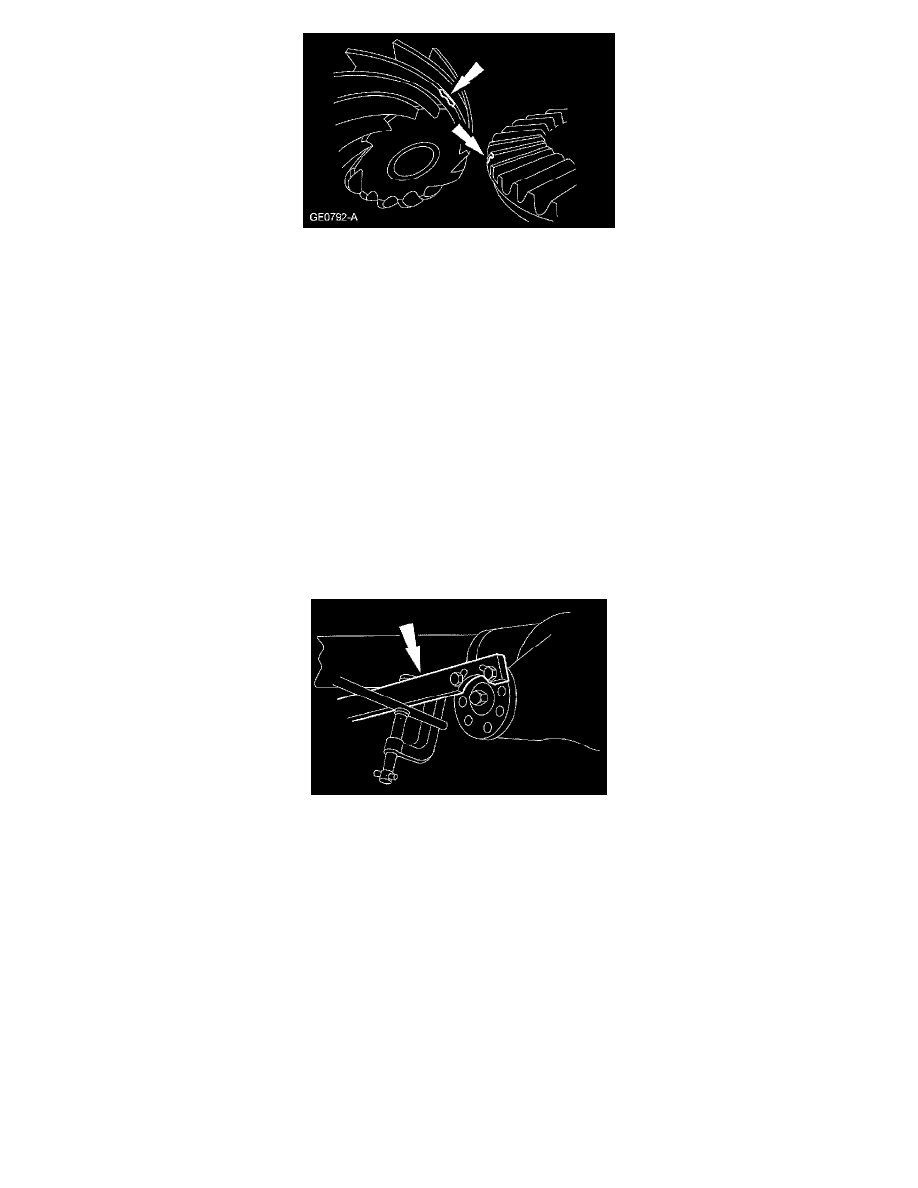Grand Marquis V8-4.6L VIN V Flex Fuel (2006)

1. A gear tooth damaged on the drive side is a common cause of the knock. This can usually be corrected by grinding the damaged area.
2. NOTE: Measure the end play with a Dial Indicator Gauge with Holding Fixture, not by feel.
Knock is also caused by excessive end play in the axle shafts. Up to 0.762 mm (0.030 inch) is allowed in semi-float axles. The frequency of the
knock will be less because the axle shaft speed is slower than the driveshaft.
Clunk
Clunk is a metallic noise heard when the automatic transmission is engaged in REVERSE or DRIVE. The noise may also occur when throttle is
applied or released. It is caused by backlash somewhere in the driveline or loose suspension components; it is felt or heard in the axle. Refer to Total
Backlash Check.
Total Backlash Check
WARNING: The electrical power to the air suspension system must be shut off prior to hoisting, jacking or towing an air suspension vehicle.
This can be accomplished by turning off the air suspension switch. Failure to do so can result in unexpected inflation or deflation of the air
springs, which can result in shifting of the vehicle during these operations.
1. Raise and support the vehicle. Refer to Maintenance/Service and Repair.
2. Remove the driveshaft.
3. Install the Drive Pinion Flange Holding Fixture.
^
Clamp a rigid bar or pipe to the tool. Clamp the other end of the bar or pipe to the frame or a body member in order to prevent movement of
the rear axle pinion flange.
4. Lower the vehicle so that one rear wheel is resting on a wheel chock to prevent it from turning. The other rear wheel will be used to measure total
rear axle backlash.
5. Rotate the free wheel slowly, by hand, until the feeling of driving the rear axle is encountered. Place a mark on the side of the tire, 305 mm (12
inches) from the center of the wheel, with a crayon or chalk.
6. While holding the crayon or chalk against the tire, rotate the wheel slowly in the opposite direction until the feeling of driving the rear axle is
encountered again.
7. Measure the length of the crayon or chalk mark on the tire.
^
If the length of the mark is 25.4 mm (1 inch) or less, the rear axle backlash is within allowable limits.
^
If the chalk mark is greater than 25.4 mm (1 inch), check for these conditions:
-
Elongation of the differential pinion shaft and holes in the differential case.
-
Missing differential pinion thrust washer or differential side gear thrust washer.
-
Galling of the differential pinion shaft and bore.
-
Excessive ring gear and pinion backlash. Follow the procedure for the type of rear axle to check backlash.
Axle Shaft Bearing Noise
Axle shaft bearing noise is similar to gear noise and differential pinion bearing whine. Axle shaft bearing noise will usually distinguish itself from gear
noise by occurring in all driving modes (DRIVE, COAST and float), and will persist with the transmission in NEUTRAL while the vehicle is moving
